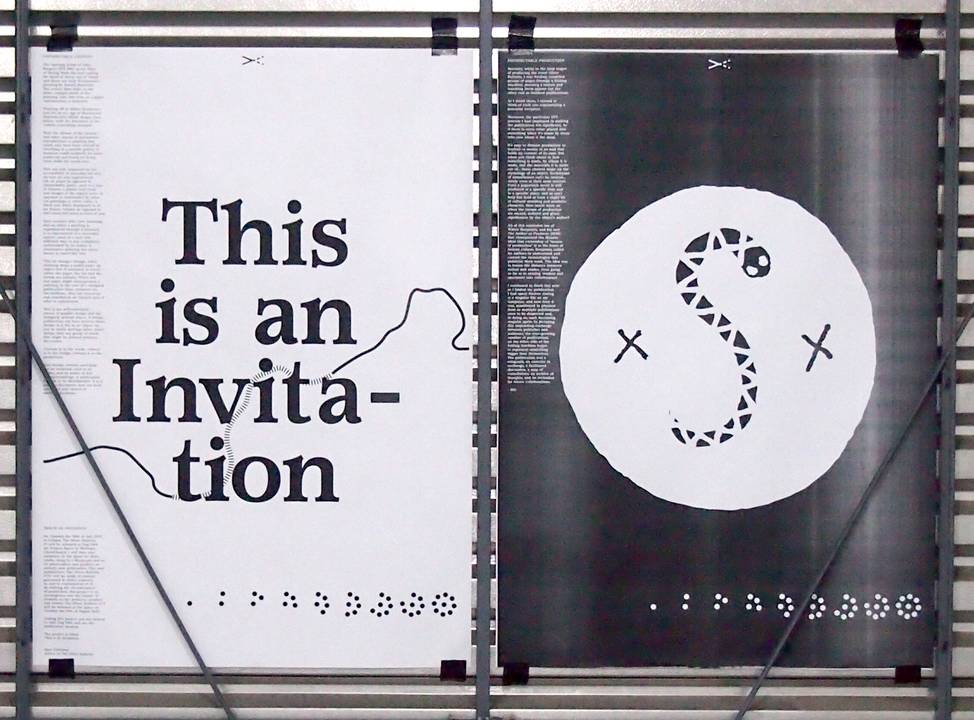Distributable Production
This text was originally printed on the black side of a double sided poster I produced in association with The Silver Bulletin project This is an Invitation at Dog Park Art Project Space in Waltham, Christchurch.

Recently, while in the final stages of producing the latest Silver Bulletin, I was feeding compiled groups of pages through a folding machine, pressing a button and watching them appear out the other end as finished publications.
As I stood there, I started to think of each one representing a potential recipient.
Moreover, the particular DIY process I had employed in making the publication felt significant. As if there is an extra value placed into something when it’s made by those who care about it the most.
It’s easy to dismiss production as neutral—a means to an end that holds no content of its own. But when you think about it; how something is made, by whom it is made, and the materials it is made out of... in these choices lie the etymology of an object. Techniques of manufacture can’t be neutral... surely even at their most neutral. Even a paperback novel is still produced at a specific time and in a specific place, and so can’t help but hold at least a slight bit of cultural meaning and aesthetic character. How much more so when the means of production are owned, defined and given significance by the object’s author?
All of this reminded me of Walter Benjamin, and his text The Author as Producer (1934) that championed the Marxist ideal that ownership of “means of production” is at the heart of human culture. Benjamin called for authors to understand and control the technologies that publicise their work. The idea was to lessen the distance between author and reader, even going so far as to turning “readers and spectators into collaborators”.
I continued to think this over as I folded my publication. I had spent forever staring at a singular file on my computer, and now here it was, manifested in physical form as multiple publications soon to be dispersed and, in doing so, each becoming singular again. In picturing this impending exchange between publisher and audience, the ever-growing number of publications on the other side of the folding machine began to represent something bigger than themselves. The publication was a telegraph, an exercise in exchange, a facilitated discussion, a map of contributors, an archive of thoughts, and an invitation for future collaborations.